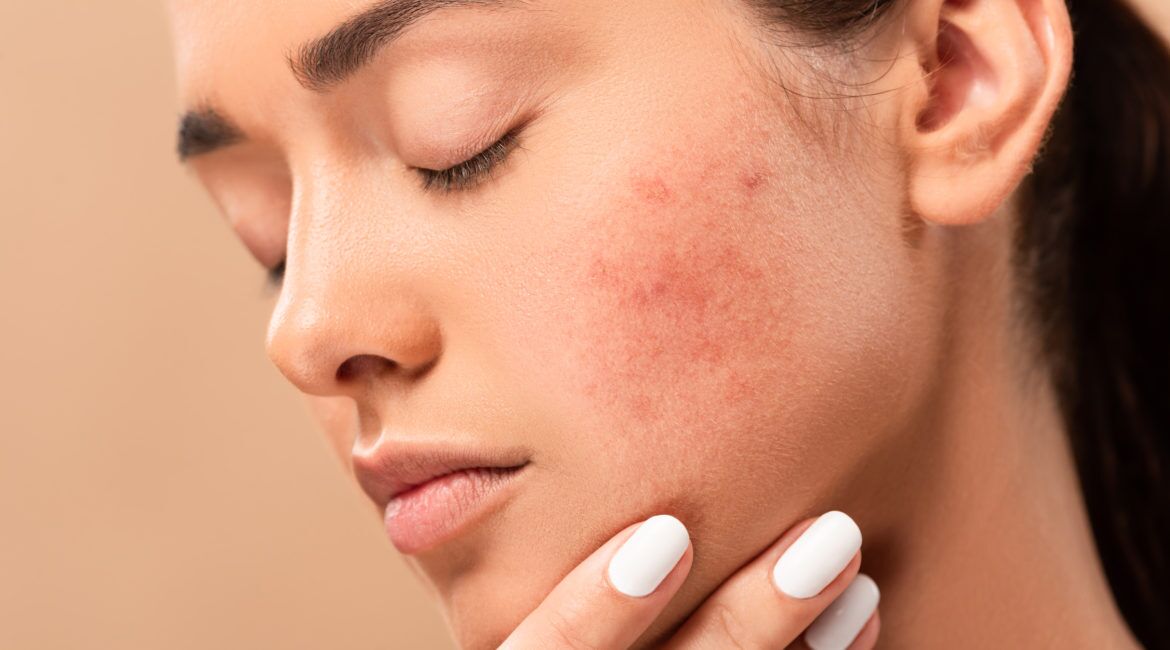You know that frustrating moment when a pimple finally goes down but leaves behind a red, angry mark? Or worse, it’s still active and glowing like a traffic light? Redness from pimples and acne is a common issue, and while it may seem impossible to hide or treat, the good news is there are real ways to calm and reduce it.
Let’s walk through the best expert-backed solutions to help fade that redness, soothe your skin, and get your glow back.
What Causes Redness in Acne?
Redness is a sign of inflammation. When your pores get clogged with oil, dead skin, or bacteria, your body triggers an immune response to fight off the invaders. This response brings more blood to the area, which shows up as redness and swelling.
Common causes of acne-related redness include:
- Active breakouts (especially cystic or nodular acne)
- Picking or popping pimples
- Skin irritation from harsh products
- Post-inflammatory erythema (the red marks left after acne heals)
Step-by-Step: How to Calm Redness from Pimples
1. Don’t Pick or Pop
We know it’s tempting, but touching, squeezing, or picking at your pimples makes the redness worse. It damages the skin, causes further inflammation, and increases the risk of scarring.
2. Use a Cold Compress
A cold compress can quickly reduce redness and swelling. Just wrap a clean ice cube or chilled spoon in a soft cloth and gently press it against the red area for a few minutes.
Pro tip: Don’t apply ice directly to your skin — it can cause irritation or even freeze burns.
3. Apply a Spot Treatment
Look for over-the-counter spot treatments that contain anti-inflammatory ingredients.
Effective ingredients to calm redness:
- Salicylic acid: Unclogs pores and reduces swelling
- Benzoyl peroxide: Kills acne-causing bacteria
- Niacinamide: Reduces inflammation and redness
- Sulfur: Helps shrink blemishes and soothe skin
Apply directly to clean skin once or twice a day.
4. Soothe with Aloe Vera or Green Tea
Natural calming agents can do wonders for redness. Aloe vera has cooling, anti-inflammatory properties, while green tea extract is full of antioxidants that help reduce irritation.
How to use:
- Use a store-bought product with aloe or green tea
- Or apply pure aloe gel or a cooled green tea bag directly to the skin
5. Moisturize Wisely
When your skin is dry or irritated, it can look even redder. A calming, fragrance-free moisturizer can help rebuild the skin barrier and reduce redness over time.
Look for ingredients like:
- Ceramides
- Hyaluronic acid
- Centella asiatica (also called cica)
Avoid products with alcohol, menthol, or added fragrance — these can irritate the skin further.
6. Use a Color-Correcting Concealer
While this doesn’t treat the redness, it can help hide it. A green-tinted concealer neutralizes red tones, making it easier to cover the spot with foundation or regular concealer.
Apply it gently with a clean brush or finger so you don’t irritate the skin.
7. Don’t Skip Sunscreen
UV rays can make red marks worse and slow healing. Apply a non-comedogenic, broad-spectrum sunscreen with at least SPF 30 every morning, even on cloudy days.
Look for mineral sunscreens with zinc oxide or titanium dioxide — they’re usually gentler on sensitive skin.
Long-Term Tips to Prevent Acne Redness
- Stick to a gentle, consistent skincare routine
- Avoid over-washing or scrubbing your face
- Use chemical exfoliants (like AHA or BHA) only 2 to 3 times a week
- Keep your hands off your face during the day
- Change pillowcases often to reduce bacteria buildup
When to See a Dermatologist
If your acne redness is severe, constant, or not improving with over-the-counter products, it’s time to see a professional. You may have rosacea, cystic acne, or need prescription treatment like topical antibiotics, retinoids, or oral medication.
FAQs About Redness from Pimples and Acne
How long does acne redness last?
It depends on the severity of the pimple and your skin’s healing speed. Post-acne redness can last from a few days to several weeks.
Does toothpaste work to reduce redness?
No. Toothpaste can dry out the skin and may cause irritation or chemical burns. It’s not recommended.
Can I use hydrocortisone cream for pimple redness?
Sometimes, a tiny dab of 1 percent hydrocortisone can reduce inflammation, but don’t use it regularly. Overuse can thin the skin.
Is it better to treat acne at night?
Yes. Night is when your skin heals, so applying calming and anti-acne treatments before bed can be more effective.
Final Thoughts
Dealing with redness from pimples and acne can be frustrating, but it’s definitely manageable. With the right combination of calming ingredients, good skincare habits, and a little patience, you can reduce inflammation and help your skin heal faster.
Remember to be gentle, stay consistent, and always listen to your skin. Clear, calm skin is possible — and you’re already on the right path.
